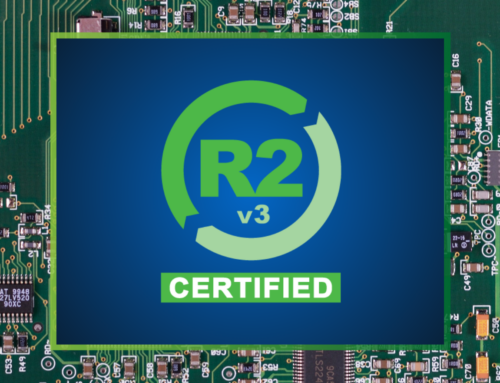As the IT professional charged with managing your company’s network, there’s a lot you’re responsible for—from securing your network to troubleshooting DNS queries. But having the right hardware and software tools in place can simplify your network management responsibilities, helping you to keep your network running tip-top and your sanity in check.
Related post: How to Become a CCNA

What kinds of tools do I need?
Every network administrator or manager worth his or her salt knows that it takes preparation and knowledgeable responses to keep your system running smoothly. When it comes to managing your network, you need the kinds of tools that will allow you to:
- Monitor
- Track
- Alert
- Troubleshoot
- Modify and correct
In order to effectively do all of these things, you will need both hardware and software tools that are proven reliable and picked with your network’s specific design requirements in mind.
What features should those tools have?
Your system needs to monitor bandwidth and usage trends, set up alerts for faults and capacity, track the IPs of connected devices and monitor user traffic—and ALL of these features should be transparent and traceable using a variety of custom reporting tools including those that make it easier to convey information to your less technical minded departments and decision makers.
Hardware Tools:
The following are the tangible, hands-on tools you should have available for your use when managing and maintaining your network. While virtually monitoring your system is made easier with the right software, the network itself still lives and breathes through the technological foundation you’ve built here in the real world.
- Butt Set
Used in telephony, a butt set allows you to test your network’s phone lines using alligator clips and a handheld set. - Cable Certifier
Want to verify your cable’s bandwidth and frequency? A cable certifier can help you confirm that your CAT 5e cable meets proper specifications, supporting speeds of 1000 Mbps. - Cable Tester
A cable tester can help you verify that your cable is wired correctly or to troubleshoot suspected faulty cables, allowing you to identify short or open cables. Fluke Networks is a great resource for high quality cable testing and diagnostic hardware. - Crimper
You’ll need a crimper to attach cables and connectors. - Toner Probe
Need to find the other end of a cable? Then a toner probe’s your new best friend, allowing you to place a tone on one end of the wire to find the corresponding tone on the other end with a speaker and contact probe. This excellent troubleshooting tool can also be used to identify cable continuity because a short or open cable will not complete the circuit and produce the tone. - Environmental monitor
Your environmental monitor will log the conditions (temp and humidity) of the room in which your sensitive network equipment resides. An excellent tool for monitoring the conditions in your data center(s) and/or server rooms, an environmental monitor can help you identify those issues that could potentially cause problems for your equipment helping you to sidestep a down. Tracking these logs can also assist you in ferreting out potential environmental causes of problems like random reboots or overheated systems. AVTECH makes a wide range of tools to monitor your environmental and power status in server rooms. - Loop back plug
Want to test your data ports and NIC jacks? A loop back plug can help you verify that data is flowing properly on that port, both sending and receiving. - Multimeter
Your multimeter can help you with continuity checks, measuring voltages, amperage, and resistance. Touch the probes to two ends of a wire and listen for the multimeter’s characteristic beep. No beep? Your cable has a break in continuity—it’s that simple. - OTDR & TDR
The optical time domain reflectometer (OTDR) and time domain reflectometer (TDR) work similarly, allowing you to isolate the locations of breaks, measuring the distance between cable ends by sending a signal down the cable and measuring how long it takes to return or reflect the signal back from a break. Both are invaluable in troubleshooting breaks and even more minor disruptions in the electrical flow of your cables. OTDR works on fiber optic cables. - Punch Down Tool
Allowing you to “punch down” connecting cables to wiring blocks or terminate cables to jacks with a small amount of pressure, the punch down tool is spring loaded and a must have for all those maintaining a network.
Hardware or Software Tools:
Some tools offer an opportunity for choice between hardware or software to do the same job, which you choose will depend on your network’s needs, budget, and priorities.
- Protocol Analyzer aka “Packet Sniffer”
Want to hunt down an unauthorized application or suspected attack on your network? Send in the sniffer. Protect your network by analyzing traffic, troubleshooting problems or suspicious activity using a protocol analyzer. While many folks view a hardware-based protocol analyzer solution as superior to software solutions, the cost difference and network priorities of your organization may make a software solution a better choice for you.
Regardless of which you choose, this hardware device or software program is used to sniff out issues and allows you to see a snapshot of wireless traffic on your network, capturing packets traveling over the network for analysis. Packets are then saved in a capture file and can be inspected for information like the source and destination IP addresses, service set identifier (SSID), source and destination media access control (MAC) addresses, source and destination ports, and payload data, allowing admins to verify they’ve been compromised and to identify the location of the computer involved. Wireshark provides both free and commercial resources for deep inspection of network activity.
Software Tools:
While there are many all-in-one solutions available to help you monitor, analyze, and maintain your network – we’ll leave the choice of which to use up to you. Here is a list of the most common tools your network management software should contain and how they can assist you in doing what you do.
- Bandwidth Monitor
Monitor the average BPS and utilization percentage of interfaces, identifying traffic bottlenecks in a switch or router in real-time with this vital bandwidth tool. Presented in an easy-to-understand graphical format. - Network Monitor
Continuously monitoring device response time, your network monitor alerts you via email, reporting node status and prioritizing severity. Ipswitch creates industry leading tools to visualize and monitor your network. - Port Scanner
Track down unknown or unwanted services running on your system using a port scanner to scan for port status, associating ports with known services. - Switch Port Mapper
Manual cable tracing is both time consuming and a total drag, save yourself from tedium and identify each switch port a device is connected to within a switch using a switch port mapper. Useful in helping you quickly assess port availability and gain real-time operational status and speeds of each port. - System Details Update
Streamline your system details update process using this handy tool that lets you to view, scan, modify, and update the details on a range of devices all at once. - TCP Reset
Providing a list of all established TCP connections in a device, the TCP reset lets you verify legitimate connections and reset those that are unwanted or unauthorized. - Wake-On-LAN
Wake it up when you’re on the go-go. Wake-on LAN allows you to remotely “wake” or boot up a machine in low power mode on the network with the use of a remote command. Solarwinds provides free tools to manage your network power consumption and use wake-on-lan technology to save energy and remotely control system power.
Before you choose a management system
Word to the wise—while all-in-one network management systems can certainly benefit network managers, streamlining your daily monitoring and duties, it’s best to remember that the basics of solid network strategy should be in place before considering any management system purchase.
This includes:
- Critical infrastructure inventories of hardware, software and change processes on your network
- An accounting of current compliance standards
- A listing of which system dependencies exist and their location
- Standards, protocol, and security guidelines for network information access
- Network maps and a status icon key
- Guidelines for network perimeter monitoring and tracking for all users and devices
- Network alert protocols based on IT team schedules and positions
Having the right tools in place for those realities and priorities is one of the most crucial aspects of a network administrator’s job.




